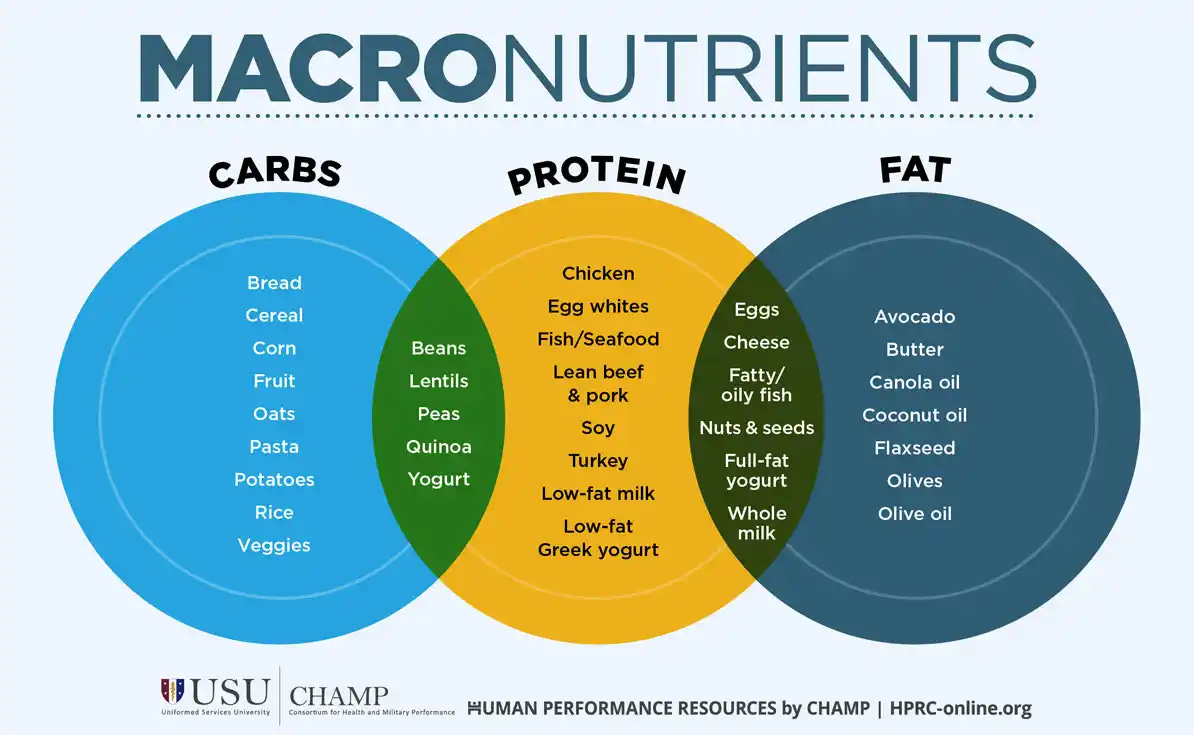A Cost Analysis of Muscle-Focused Nutrition
Breaking down an average day of muscle, performance, and total health-based meals.
A few weeks back I put it out into the universe that I was going to write an article comparing the cost of healthy foods versus processed/junk foods. My motivation comes from seeing so many people state that they can’t eat healthy because it costs too much. Whenever I see this claim, I think about my own weekly grocery shopping experiences and I always end up questioning whether it’s true or not.
Is it really more expensive to eat healthy foods?
What is Healthy Food?
For this article to continue, I want to give you my definition of healthy foods, because there are many different opinions on what that term actually means. To me, naturally occurring whole foods are considered healthy. Some examples are:
Old fashioned oats versus a packaged oatmeal bar
Chicken breast versus packaged chicken tenders
A couple of pieces of fruit versus a bottled fruit smoothie
Potatoes versus packaged french fries
Rice versus microwaveable seasoned rice packets
The theme here is really focusing on foods that aren’t manmade concoctions of foods, preservatives, dyes, and other ingredients you won’t find in naturally occurring foods.
Do some packaged foods lean toward the healthy side? Sure. Is it fine for you to substitute them for natural foods when necessary? Of course. My definition isn’t perfect and I really don’t think anyone’s is. However, if you follow my definition, you can be confident you’re doing a good job of choosing wisely while walking those aisles. I think that’s important.
The True Goal of This Article
Getting back to my intro, I continuously see people saying that it’s unaffordable to eat healthy foods, which forces them to consume processed packaged junk. I thought of two ways to tackle this topic.
I could compare the pricing of healthy choices and processed options that are similar in ingredients and calorie content.
I could lay out a day’s worth of healthy food options, providing beneficial nutrition, in reasonable serving sizes for the average person, and show that the cost isn’t obscene or what most think it is.
I’m choosing the second option because it’s more straightforward and I believe that spending time coming up with the first option’s comparisons would leave too much room for those wanting to nitpick if they’re good or not. So, option two it is.
The Actual True Goal of This Article
As I was writing, this is where I took a break for a couple days and really thought about what I wanted this article to be.
In my head, it was quickly evolving from a healthy versus unhealthy eating cost analysis to something different, and here’s why…
I realized that you and I aren’t interested in hearing about the cost of unhealthy eating because it’s not something we’re striving towards. In fact, it’s the opposite. We’re focused on eating for muscle, performance, and overall health. For us, the healthy/unhealthy cost debate is a meaningless point. Would you agree?
I don’t want to know if drive-thru chicken tenders and fries are cheaper than homemade chicken breast and potatoes because fast food doesn’t help me efficiently reach my goals. By the way, I’ve done the math and it turns out that Ronald McDonald and the Burger King are much more expensive chefs than I am.
Regardless, I think you get my point. Instead of an unhealthy/healthy cost debate, I want this article to be something you find interesting and valuable. I believe that’s what I’ve done here…read on!
From here on out, this article is in tune with it’s title: A Cost Analysis of Muscle-Focused Nutrition. This means I’m going to keep both macro and micronutrient intake in mind. I’m going to focus on the importance of including proteins, carbs, and fats. I’m also going to ensure the inclusion of fruits and vegetables. My goal is to make these food options beneficial to a muscle, performance, and overall health-based lifestyle. Let’s get started!
The Calories & Macros
As the subtitle says, I’m going to be using the nutrition needs of an average person.
Nutrition definitely isn’t a one size fits all concept, but for an article like this, using one set of numbers is suitable.
After some thought, I’m going to go with 2500 calories per day for a total energy intake.
I picked this number because I don’t want to lowball a number just to reduce the total cost at the end of the day, which would paint an artificial picture of how much it costs to eat for your physical goals. At the same time, I don’t want to aim too high, as that’s honestly not representative of what the average person needs to feel strong, be muscular, and feel healthy inside. Most people aren’t focused on gaining weight, nor are they highly-active athletes.
In terms of macronutrient calorie counts, we’re going to go with ballpark numbers of:
25% Protein
35% Fat
40% Carbs
These are generic, but also, well-accepted percentages of total calorie intake for providing adequate and beneficial amounts of each macronutrient. This breaks down to:
Total Protein: 155g (620 calories)
Total Fat: 97g (873 calories)
Total Carb: 250g (1000 calories)
Total Calories: Roughly 2500 (2493 to be exact)
Now that we have the backbone of our day’s worth of eating, let’s move into our sample food options and their costs.
The Foods & Costs
Three things to note when looking over these lists:
I chose the number of calories per serving based off of them spreading nicely over four meals per day. I’ll talk about my reasoning for my chosen meal frequency later, but thought this was important to mention.
The foods listed are simply examples of foods that fit each category. They are not the only options, but I wasn’t about to list every single food that fits each category. I picked a handful of common options that I believe most people are familiar with.
Pricing will vary from one store to the next, as well as location. The prices in this article reflect those from Walmart, which is the largest grocery chain in the US. The specific location I used is Lakeville, Minnesota.
Without further ado, here are the categories, sample options, and costs per serving:
Protein Options - Roughly 150 Calories Per Serving
Fat Free Greek Yogurt - Serving Size: 6.4oz - $0.71
Chicken Breast - Serving Size: 4.8oz Raw - $0.89
Fat Free Cottage Cheese - Serving Size: 8.5oz - $1.05
Pork Loin Chops - Serving Size: 4oz Raw - $1.21
90/10 Ground Beef - Serving Size: 3.0oz Raw - $1.29
Canned Tuna - Serving Size: 1.6oz Drained - $1.43
Whey Protein - Serving Size: 1.3oz Dry - $1.60
Tilapia - Serving Size: 5.5oz Raw - $2.40
Fat Options - Roughly 200 Calories Per Serving
Butter - Serving Size: 2 Tbsp - $0.33
Olive Oil - Serving Size: 1.6 Tbsp - $0.38
Natural Peanut Butter - Serving Size: 2.1 Tbsp - $0.53
Walnuts - Serving Size: 1.0oz - $0.53
Avocado - Serving Size: 0.75-1 Whole Medium - $0.60-0.80
Cheese - Serving Size: 1.75oz - $0.74
Whole Egg - Serving Size: 3 eggs - $1.23
Carb Options
Starch Options - Roughly 150 Calories Per Serving
Pasta Noodles - Serving Size: 1.5oz Dry - $0.10
White Rice - Serving Size: 1.5oz Dry - $0.13
Old Fashioned Oats - Serving Size: 1.4oz Dry - $0.13
White Potato - Serving Size: 7.0oz Raw - $0.24
Quinoa - Serving Size: 1.4oz Dry - $0.28
Sweet Potato - Serving Size: 6.0oz Raw - $0.48
Fruit Options - Roughly 100 Calories Per Serving
Banana - Serving Size: 4.0oz - $0.30
Apple - Serving Size: Serving Size: 7.0oz - $0.75
Pear - Serving Size: Serving Size: 6.0oz - $0.75
Mango - Serving Size: Serving Size: 6.0oz - $0.75
Strawberry - Serving Size: Serving Size: 11.0oz - $2.14
Blueberry - Serving Size: Serving Size: 6.0oz - $2.31
Vegetable Options - Roughly 100 Calories Per Serving
Sweet Peas - Serving Size: Serving Size: 4.5oz - $0.37
Baby Carrots - Serving Size: Serving Size: 8.5oz - $0.70
Broccoli Florets - Serving Size: 10.0oz - $0.97
Cauliflower - Serving Size: Serving Size: 10.0oz - $0.97
Green Beans - Serving Size: Serving Size: 12.0oz - $0.98
Brussel Sprouts - Serving Size: Serving Size: 9.0oz - $1.05
It isn’t every day I see the costs of these foods broken down by serving. For the most part, I’m concerned with total cost per package or piece when I’m at the grocery store. When figuring these ‘per serving’ costs, I was surprised a few times.
I didn’t expect a handful of the listed protein sources to be cheaper than canned tuna. I certainly didn’t expect chicken breast to be that much cheaper than canned tuna per 150 calories. Both of these are mainly pure protein, but to me, canned tuna just comes across as a lower quality option than fresh chicken breast.
I was stunned at the small costs for the starches per 150 calorie serving. We’re talking about a dime or just over for pasta, rice, and oats…I didn’t expect that. Even russet potatoes and quinoa are just around a quarter per serving. Again, those numbers caught me by surprise. If someone didn’t prioritize their protein or fat intakes, they could literally eat for just a couple of bucks per day.
The costs per serving for some of the beneficial fat sources, like butter, olive oil, walnuts, and avocado are lower than I expected. We’re talking all under $1.00 and most well under a dollar. They ranged from $0.33 to $0.80, which is amazing for those types of satiating and hormone-supporting foods, in my opinion.
What about you? Did any of the numbers above surprise you?
Serving size costs for single foods are one thing, but now I’d like to price out some meals that are made from the food options above. Let’s take that next step…
A Sample Meal Plan & Price Per Meal
As with my approach to coming up with a reasonable target calorie intake, I’m using a similar thought process with the meal plan.
I want it to be effective for the majority of physical goals, suitable for the average adult’s schedule, and simple to follow. In my experience, nutritional success comes easiest when those three planning boxes can be checked.
This leads to a plan consisting of four meals per day, all of which are similar in calorie intake and implement roughly the same categories of foods. There’s no need to make things complicated with rules like ‘no carbs in the evening’ or ‘carbs and fats can’t be consumed at the same time.’ Rules like these, and so many others, have been debunked many times over and they add completely unnecessary complication to nutrition planning.
I’d also like to point out that I’ve taken multiple steps to ensure that the foods included in this plan are focused on providing complete protein, a variety of beneficial fat types, physical performance-enhancing starches, fiber, vitamins, minerals, and satiety. Not only are these meals cost-effective, they’re health and performance-minded.
Before breaking down the plan, I’d like to point out that there’s nothing wrong with seasoning/flavoring your proteins and sides as you wish. Nobody is expecting you to eat all of these foods plain, so season accordingly and mix your flavoring choices up to keep things fresh. To avoid unwanted calories, choose zero/low calorie seasoning/flavoring options.
OK, let’s look at the sample meal plan…
Meal 1 - Roughly 625 Calories
This is a protein-rich convenient breakfast, which will give you everything you need to kick off your day. My personal recommendation is to blend water, ice, chocolate protein powder, and peanut butter to make a tasty shake. On the side, prepare the oats and mix in the banana with some cinnamon. You won’t regret it!
Protein - Whey Protein Powder - 1.3oz Dry - $1.60
Fat - Natural Peanut Butter - 2.1 Tbsp - $0.53
Starch - Old Fashioned Oats - 1.4oz Dry - $0.13
Fruit - Banana - 5.0oz Edible Portion - $0.38
Total Cost - $2.64
Meal 2 - Roughly 625 Calories
The secret to this meal is to prepare your chicken breast and rice in bulk, cutting your prep time per meal to a fraction of making everything fresh every time. When I see these ingredients, I envision slices of chicken breast and avocado alongside baby carrots, all placed on a bed of rice. Add flavor with your choice of seasoning, but I’d personally take it to Asia with soy sauce.
Protein - Chicken Breast - 4.3oz Raw - $0.80
Fat - Avocado - 0.75-1 Whole Medium Sized - $0.60-0.80
Starch - White Rice - 1.5oz Dry - $0.13
Vegetable - Baby Carrots - 10.6oz Raw - $0.88
Total Cost - $2.41-2.61
Meal 3 - Roughly 625 Calories
Here we’re looking at a classic meat and potatoes meal. My plan of action would be to make a salt, pepper, and garlic seasoned beef patty. I’d couple it with a baked potato and steamed broccoli, both sprinkled with seasonings and shredded cheese. Too easy!
Protein - 90/10 Ground Beef - 3.0oz Raw - $1.29
Fat - Cheese - 1.75oz - $0.74
Starch - Russet Potato - 7.0oz Raw - $0.24
Vegetable - Broccoli Florets - 12.5oz Raw - $1.21
Total Cost - $3.48
Meal 4 - Roughly 625 Calories
This is a recipe that I’ve recommended to so many people. Unless they can’t handle cottage cheese, they always love it. It’s full of nutrition and takes just a couple of minutes to put together. Simply mix the cottage cheese and yogurt in a bowl and top with the walnuts and berries. My personal preference is to use vanilla Greek yogurt. Also, the cost of this meal can easily be cut down with lower cost fruit options.
Protein - Fat Free Cottage Cheese - 8.5oz - $1.05
Protein - Fat Free Greek Yogurt - 6.4oz - $0.71
Fat - Walnuts - 1.1oz - $0.60
Fruit - Blueberries - 3.0oz - $1.15
Fruit - Strawberries - 5.5oz - $1.07
Total Cost - $4.58
Total Cost of All Meals - $13.20
Total Calories - 2500
Truthfully, the cost of these individual meals kinda blows my mind, even including meals 3 and 4, which were the most expensive.
Comparing the costs of these completely nutritional meals to processed fast food or freezer section dinners becomes laughable.
A foot long Subway sub is more than the cost of the entire day laid out above and it’s nowhere near as nutritious, not to mention it won’t satisfy you for 16 hours…something to think about.
The Last Bite
This article started out in one direction and ended up taking another, which I feel is for the better. The unhealthy versus healthy debate will continue to rage on, but do we really need to be a part of it? Does it even matter to us? For me, the answer is no.
I’m focused in on figuring out how I can give myself the macro and micronutrients I need to reach my physical goals and maintain good health, all while sticking within my budget.
After writing this article, I have more knowledge on the specific costs of common foods that fit a performance-based meal plan. After reading it, I hope you do too. I also hope it sparks some new thoughts around your nutrition and food choices, whatever they may be. If it did, share them with the rest of us.
Thank you for reading,
Ryan











Phenomenal read. Thank you!